When the puck drops on Thursday night and the St. Louis Blues begin their second-round matchup against the Dallas Stars, they will be staring down a familiar foe in the opposing net. The Stars’ crease will be home to Ben Bishop, a St. Louis native and former Blue who is a Vezina Trophy finalist for the third time in his career.
Even with the meteoric rise of Jordan Binnington, the impending matchup has led to much discussion amongst Blues fans about how the team let such a great goalie get away. Let’s take a look back at the circumstances that led to the team trading away a promising young goalie.
Halak, Elliott, and Bishop
When the Blues traded Bishop to the Ottawa Senators back in 2012, they had a genuine logjam in net. Jaroslav Halak had arrived the season before after an impressive playoff campaign with the Montreal Canadiens and had taken hold of the team’s starting spot. The 2011-12 season was arguably the best of his career.
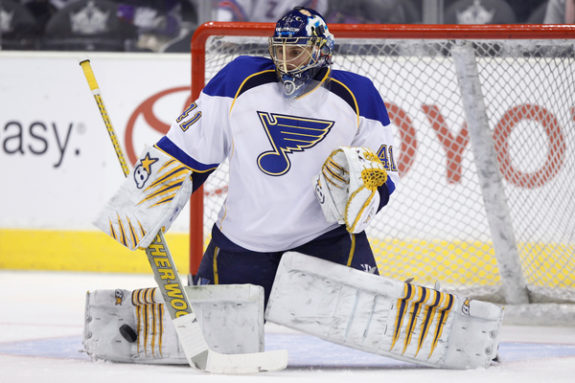
Jaroslav Halak (Icon SMI) 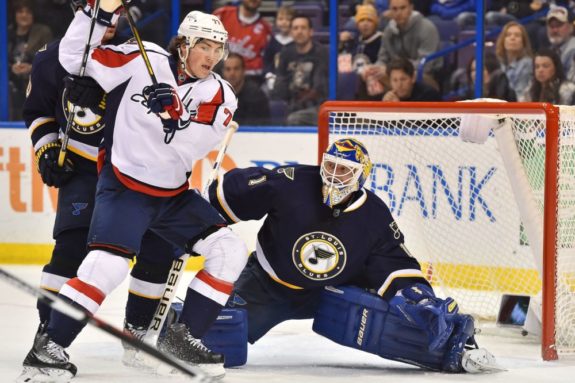
Brian Elliott (Jasen Vinlove-USA TODAY Sports) 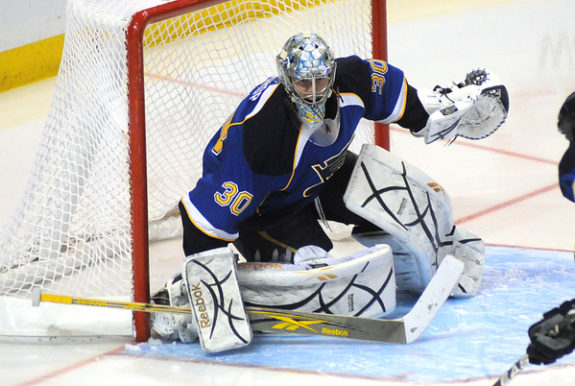
Ben Bishop(Icon SMI)
Entering that season, the plan had been for Bishop to graduate from the American Hockey League (AHL) and serve as Halak’s backup. But general manager Doug Armstrong didn’t want things to come too easily for the native St. Louisan, and signed Brian Elliott after an atrocious season with Ottawa and the Colorado Avalanche. The intention was for Elliott to serve as training camp competition for Bishop, to make him earn the backup role.
Unfortunately for Bishop, Elliott came to St. Louis ready to take the job, and he did just that. He outplayed his competition and ended up as the backup in the NHL, which pushed Bishop back down to the AHL.
Elliott and Halak formed a perfect tandem, and were seemingly unbeatable that season. Halak went 26-12-7 with a .926 save percentage (SV%) and a 1.97 goals against average (GAA). As unbelievable as it is, Elliott surpassed him, going 23-10-4 with a .940 SV% and a 1.56 GAA (leading the league in both categories). The performance was enough for the tandem to bring home the William M. Jennings Trophy, awarded to the pair of goaltenders with the fewest goals against in a season.
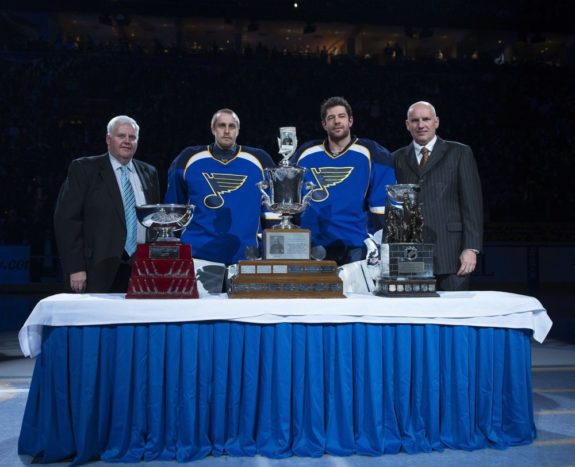
While fans were thrilled with the unbelievable goaltending they were getting at the NHL level, Bishop was tearing up the AHL. He went 24-14-0 with six shutouts, which led the league, and had a .928 SV% and a 2.26 GAA.
No one doubted Bishop’s talent, but there was nowhere for him to play at the NHL level. Additionally, the Blues were handcuffed by a clause in Bishop’s contract which required that he play in 17 more NHL games before season’s end, or else he’d become an unrestricted free agent. Faced with the choice of trading him or losing him for nothing, Armstrong sent his prospect to the Senators for a second-round pick in the 2013 draft (which he would later use on Tommy Vannelli).
The Jake Allen Factor
It is never easy to trade a young netminder, but Armstrong’s decision was made easier by the presence of his other promising prospect, Jake Allen. A high second-round pick of the Blues in 2008, Allen was fast approaching NHL-readiness at the time of the trade, which gave the Blues backup if either Halak or Elliott gave out.
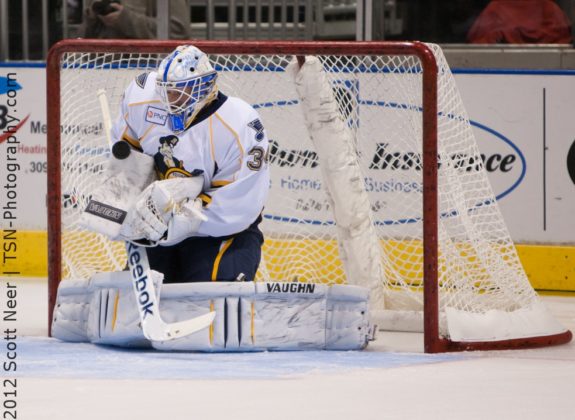
Allen had built an impressive resume in junior hockey, guarding the crease for Team Canada in the 2008 World Junior Championship before bringing home the Jacques Plante Memorial Trophy for the QMJHL’s best goaltender and being named the CHL Goaltender of the Year.
By the time Bishop was traded, Allen had begun to establish himself at the AHL level, too. He had played in 47 games the season before and posted a .917 SV% and a 2.52 GAA, and as a backup and the eventual replacement for Bishop in 2011-12, he played 38 games with a 2.15 SV% and a 2.93 GAA. Just two seasons later, he would win the Aldege “Baz” Bastien Memorial Award as the AHL’s best goaltender.
Though Allen has fallen on hard times lately, and has become the subject of much criticism amongst fans, there’s no denying the incredible ceiling he once had. Considering that Bishop was the odd man out at the NHL level, and that the Blues had an impressive prospect biting at his heels, it is clear to see in hindsight why the Blues chose to send him to Ottawa rather than lose him for nothing.
Meet Me in St. Louis
Bishop has come a long way since leaving the Blues, and now returns to his hometown to play his former team in the second round of the playoffs. He does so in the midst of his best career season, having gone 27-15-2, with a .934 SV% and a 1.98 GAA with seven shutouts. He was also the difference in the Stars’ six-game series against the Nashville Predators, with a .945 SV% and a 1.90 GAA.
While it will be easy for Blues fans to criticize the decision to trade Bishop seven years ago (especially if he helps the Stars to victory in the series) a proper understanding of the circumstances informs us that the trade, while difficult, was the only decision available to the Blues at the time. Now, Blues fans are only hoping it won’t come back to haunt them more than it already has.